12 January 2018 – 8 April 2018
Morris and Helen Belkin Art Gallery
Beginning with the Seventies: GLUT
-
Alexandra Bischoff
ArtistAlexandra Bischoff is a performance artist and writer and activist from Edmonton, Alberta. Now based in Vancouver, British Columbia, Alexandra’s practice proliferates in several realms of the arts. In 2015, Alexandra received a Bachelor of Fine Arts from Emily Carr University of Art and Design, and was nominated as the Undergraduate Class Valedictorian. Although her work involves varying mediums, the quality of performance resonates throughout her oeuvre. Her practice explores the sensual and obscure intimacies of everyday interactions, focusing on the subtle anomalies of human existence. She often implements humour, absurdity, and femme sexuality to frame such topics, and at times to discuss challenging issues when implied.
Her work has been exhibited across Canada at galleries such as the Illingworth Kerr Gallery in Calgary, and Unit 17 and 221A in Vancouver, among others. She has been involved in reading rooms and book launches hosted at Burrard Arts Foundation, 221A, and the Vancouver Art Book Fair. As a writer, her work has been featured in publications such as LAUGH magazine, ISSUE, Transmutation Anthology, WOO, and AFFECTUS, as well as catalogues for Gam Gallery and the Rennie Collection. (2018)
Read More
-
Anthea Black and Shamina Chherawala
Artist -
Allyson Clay
Artist -
Jo Cook and the Vancouver Women's Bookstore
Artist -
Judith Copithorne
Artist -
Gathie Falk
Artist -
Martha Fleming and Lyne Lapointe
Artist -
Jamelie Hassan
Artist -
Colleen Heslin
Artist -
Corita Kent
Artist -
Alison Knowles
Artist -
Germaine Koh
Artist -
Laiwan
ArtistLaiwan is an interdisciplinary artist, writer, and educator with a wide-ranging practice based in poetics and philosophy. Born in Zimbabwe of Chinese parents, her family immigrated to Canada in 1977 to leave the war in Rhodesia. Her art training began at the Emily Carr Institute of Art + Design (1983), and she returned to school to receive an MFA from the School for Contemporary Arts, Simon Fraser University (1999). Recipient of numerous awards, including a recent Canada Council InterArts Research and Creation Award (2017) and Vancouver Queer Media Artist Award (2008), Laiwan serves on numerous arts juries, exhibits regularly, curates projects in Canada, the US, and Zimbabwe, is published in anthologies and journals, and is a cultural activist. Laiwan teaches in the MFA in Interdisciplinary Arts Program at Goddard College in Port Townsend, Washington (2001–). Recent projects in public space include A New World is Reversed Audiowork (2018), Other Sights; Mobile Barnacle City (2018), 10 Different Things with ECUAD Living Labs, City Studio, CoV, Artspeak, Goddard College; Barnacle City – The Movie (2017), CoV; Fountain: the source or origin of anything (2014), The Wall, Vancouver Heritage Foundation; and upcoming in 2019, Wander: toward a lightness of being, at the Skytrain Station bus exchange in New Westminster. (2018)
Read More
-
Sara Leydon
Artist -
Ladies Invitational Deadbeat Society (LIDS) with Anthea Black, Nicole Burisch, Wednesday Lupypciw
Artist -
Kelly Mark
Artist -
Divya Mehra
Artist -
Adrian Piper
Artist -
Kristina Lee Podesva
Artist -
Anne Ramsden
Artist -
Lisa Robertson
Artist -
Evelyn Roth
Artist -
Kathy Slade
Artist -
Elizabeth Zvonar
Artist -
Lorna Brown, Curator
Curator
Opening reception: Thursday, January 11, 6-9 pm
Celebrating the excessive abundance of the archive, Beginning with the Seventies: GLUT is concerned with language, depictions of the woman reader as an artistic genre and the potential of reading as performed resistance. Central to the exhibition, Rereading Room is a reconstruction of the Vancouver Women’s Bookstore (1973-1996) in the second iteration of a project by Alexandra Bischoff. Thirteen artists, writers, theorists and researchers have been invited to occupy the installation as The Readers for the duration of the exhibition, working with and against the inventory by reading, annotating and supplementing the collection to form a dossier of responses. A textile multiple by Kathy Slade will wrap and adorn The Readers and lingering visitors. Lisa Robertson finds in Baudelaire’s dandy a tangible presence for old women in public spaces. A multitude of artworks dating from 1968 to 2017 explore language as a medium and material, including works by Allyson Clay, Judith Copithorne, Gathie Falk, Jamelie Hassan, Germaine Koh, Laiwan, Sara Leydon, Divya Mehra, Adrian Piper, Kristina Lee Podesva, Anne Ramsden, Evelyn Roth and Elizabeth Zvonar, among others that are drawn from the Belkin Art Gallery collection, the Kamloops Art Gallery, SFU Galleries, the Surrey Art Gallery and the Vancouver Art Gallery.
Beginning with the Seventies: GLUT is the first of four exhibitions based upon the Belkin Art Gallery’s research project investigating the 1970s, an era when social movements of all kinds – feminism, environmentalism, LGBTQ rights, Indigenous rights, access to health services and housing – began to coalesce into models of self-organization that overlapped with the production of art and culture. Noting the resurgence of art practice involved with social activism and an increasing interest in the 1970s from younger producers, the Belkin has connected with diverse archives and activist networks to bring forward these histories, to commission new works of art and writing and to provide a space for discussion and debate.
The Beginning with the Seventies project is made possible with the generous support of the Vancouver Foundation, the Canada Council for the Arts, the British Columbia Arts Council, our Belkin Curator’s Forum members and the Department of Canadian Heritage Young Canada Works Program. We are grateful to 221A, Bopha Chhay, Georgia Scherman Projects, Kamloops Art Gallery, Monte Clark Gallery, Samek Art Museum, SFU Art Collection, Surrey Art Gallery and Vancouver Art Gallery for lending works to the exhibition.
Image (above): Colleen Heslin, Franny (detail), 2007/17. Courtesy of the artist and Monte Clark Gallery.
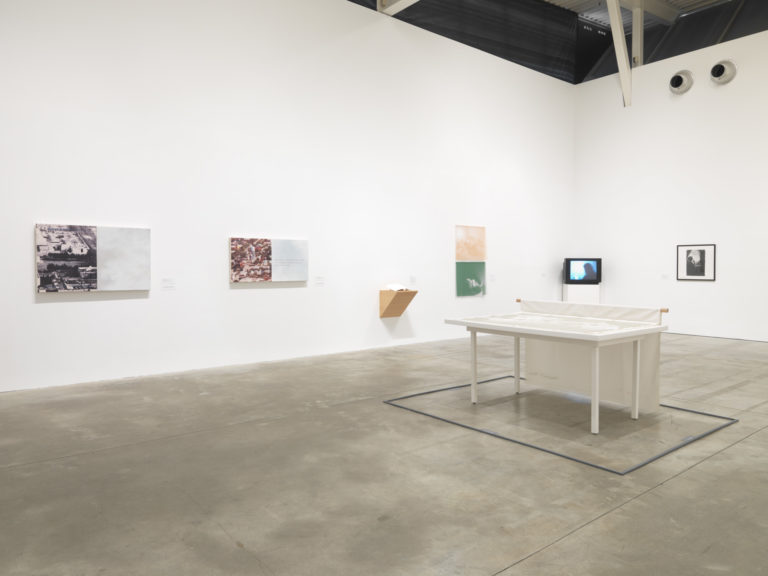
Left to right: Allyson Clay, Some places in the world a woman could walk: Voices from the street, 1995, acrylic, screenprint, photograph, vinyl on canvas; Some places in the world a woman could walk: Regina, 1993, acrylic, screenprint, photograph on canvas; Kathy Slade, Love Poem, 2015, artist book; Colleen Heslin, Franny, 2007/2017, fabric print on chiffon; Kristina Lee Podesva, (r.e.) remarks on colour, 2006, single-channel digital video, 57:26; Adrian Piper, Let’s Talk, from the portfolio 10: Artist as Catalyst, 1992, 5-colour serigraph; Alison Knowles, Coco Princess, 1990, screenprint on fabric.
Photo: Rachel Topham
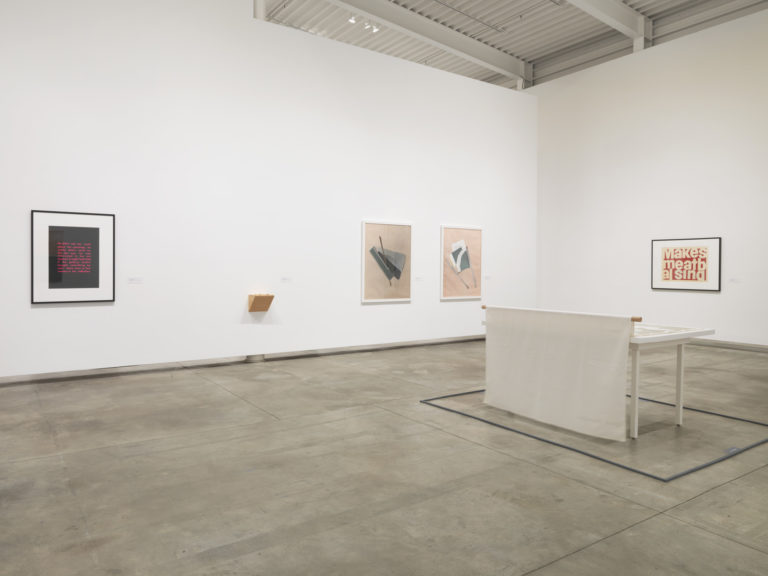
Left to right: Allyson Clay, Untitled (He didn’t ask her much…), 1990, screenprint on paper; Kelly Mark, Bus Transfer Origami, 1999, 4 bus transfers; Sara Leydon, Untitled (“They Say…”), 1982, hand-coloured silver gelatin print on paper; Sara Leydon, Untitled (Suddenly, There’s A New Way Of Thinking…), 1982, hand-coloured silver gelatin print on paper; Corita Kent, A Song About Greatness, 1964, stencil on paper; Alison Knowles, Coco Princess, 1990, screenprint on fabric.
Photo: Rachel Topham

Left to right: Judith Copithorne: works on paper, 1971-1972; Jo Cook and the Vancouver Women’s Bookstore, The Women’s Book Store Opening, 1972, print on paper; Alexandra Bischoff, Rereading Room: The Vancouver Women’s Bookstore (1973-1996), 2016-18, texts chosen from the 1973 Vancouver Women’s Bookstore catalogue; Kathy Slade, For the Readers, 2018, cotton; Anthea Black and Shamina Chherawala, Handbook: Supporting Queer and Trans Students in Art and Design Education, 2017, Printed by NickShick and Queer Publishing Project.
Photo: Rachel Topham
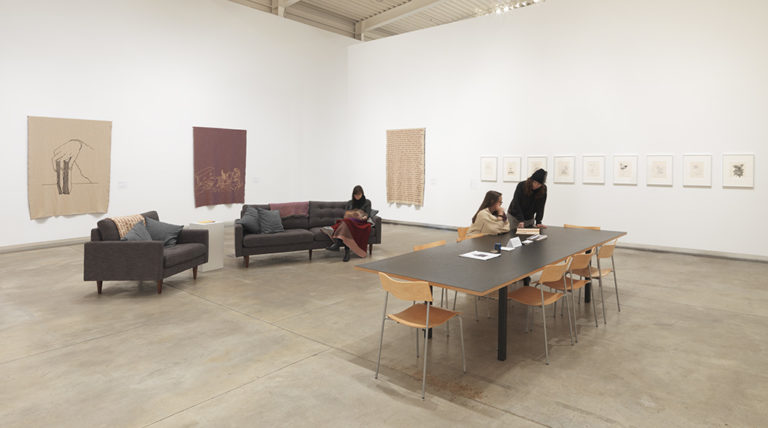
Left to right: Kathy Slade, For the Readers, 2018, cotton; Judith Copithorne: works on paper, 1971-1972; ; Alexandra Bischoff, Rereading Room: The Vancouver Women’s Bookstore (1973-1996), 2016-18, texts chosen from the 1973 Vancouver Women’s Bookstore catalogue.
Photo: Rachel Topham
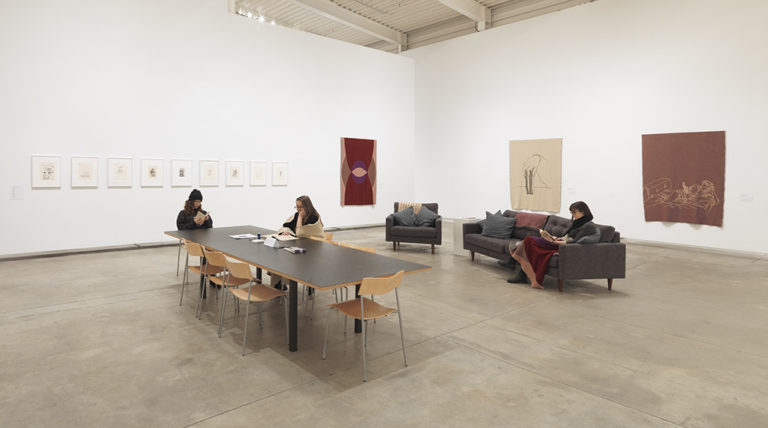
Left to right: Judith Copithorne: works on paper, 1971-1972; ; Kathy Slade, For the Readers, 2018, cotton; Alexandra Bischoff, Rereading Room: The Vancouver Women’s Bookstore (1973-1996), 2016-18, texts chosen from the 1973 Vancouver Women’s Bookstore catalogue.
Photo: Rachel Topham
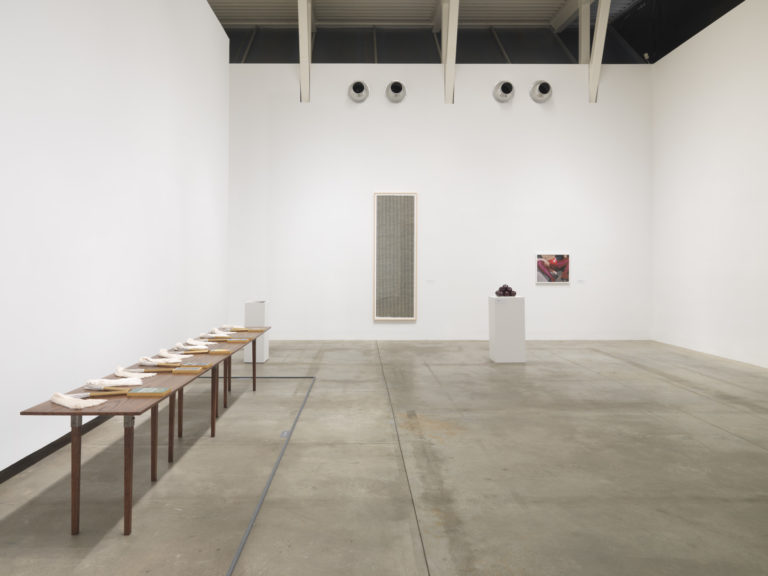
Left to right: Anne Ramsden, Excerpts (Nietzsche on Women), 1992, wood, metal, textile, paper, ink; Gathie Falk, Striped Shirting (Dark Grey and Off White), 2002, acrylic on vellum; Gathie Falk, 14 Rotten Apples, 1970, earthenware; Elizabeth Zvonar, Origin of the World, Peaches in Space, 2010.
Photo: Rachel Topham

Elizabeth Zvonar, Origin of the World, Peaches in Space, 2010, inkjet print.
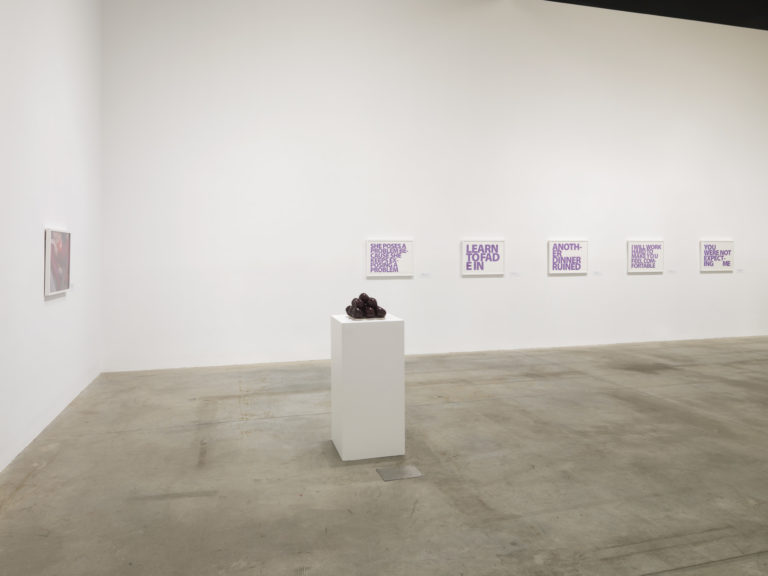
Left to right: Elizabeth Zvonar, Origin of the World, Peaches in Space, 2010, inkjet print on Kodak semi-matte paper; Gathie Falk, 14 Rotten Apples, 1970, earthenware; Divya Mehra: The Bitch Blues (where does the Divide begin?), 2014; Striving toward enhanced linguistic tolerance, 2014; Doomsday (Collective Failure) OR Death may be your dessert, 2014; You Made Me, 2014; Rebranding YOURSELF as SOMEONE (who could definitively do something else), 2014, sizzurp, acrylic ink on watercolour paper.
Photo: Rachel Topham
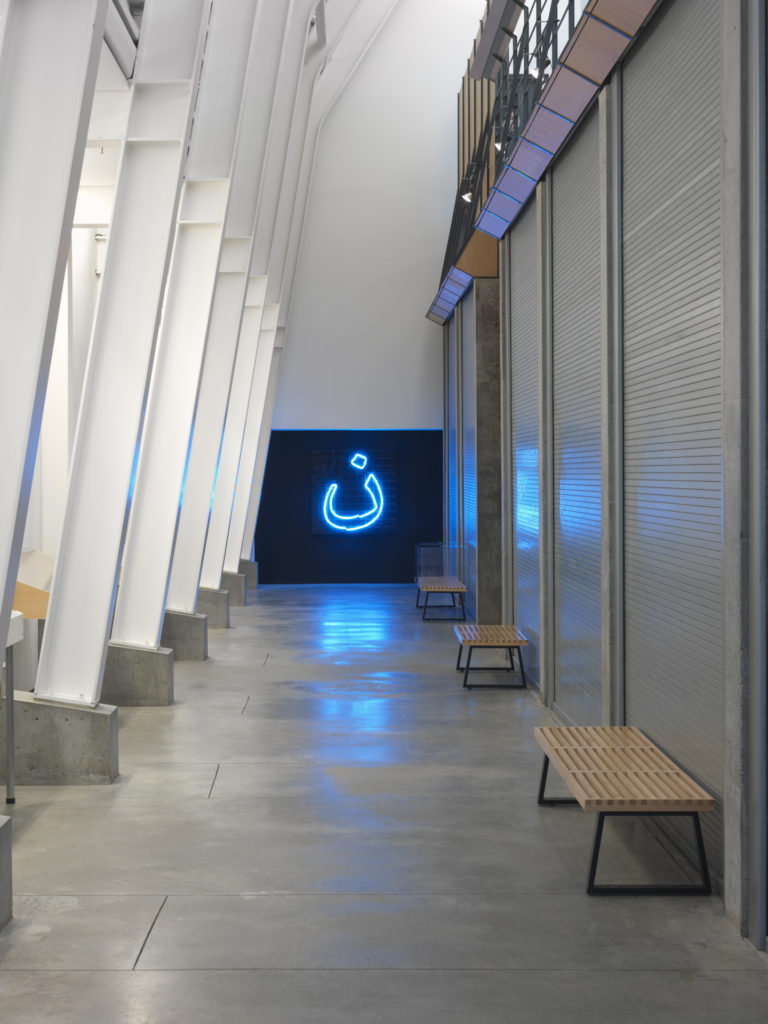
Jamelie Hassan, ن , 2009, neon light on ceramic tile.
Photo: Rachel Topham
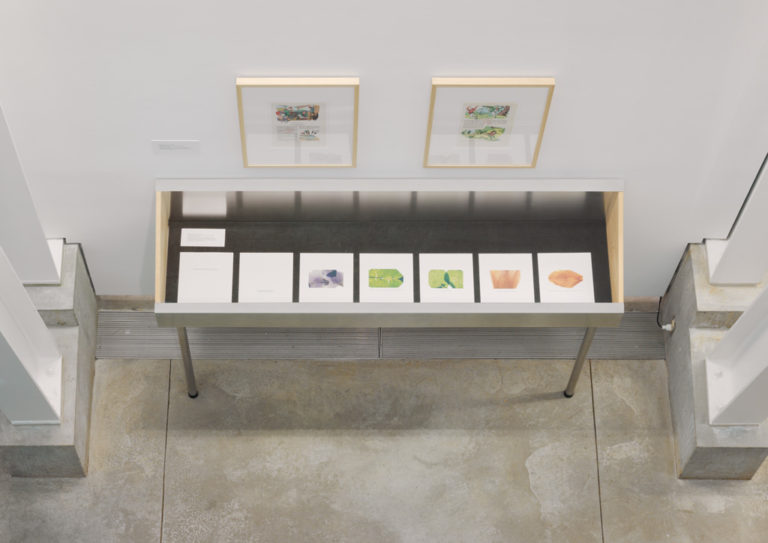
Laiwan, she who has scanned the flower of the world, 1996, 27 inkjet prints on paper.
Photo: Rachel Topham
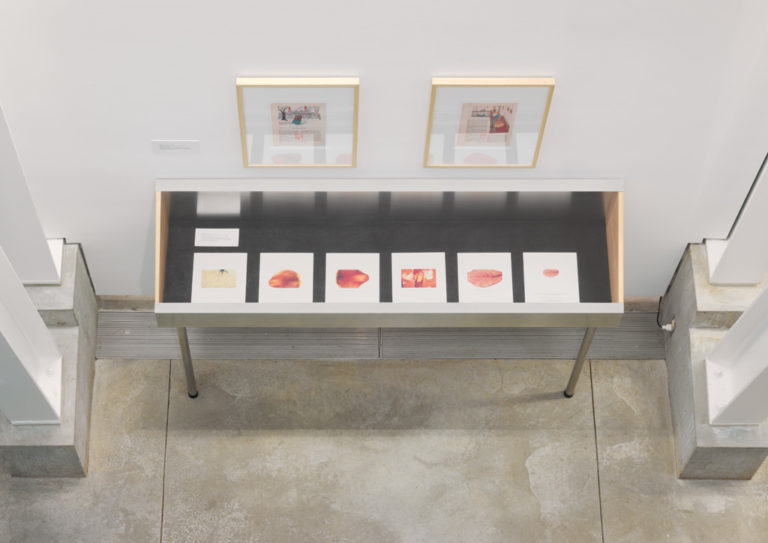
Laiwan, she who has scanned the flower of the world, 1996, 27 inkjet prints on paper.
Photo: Rachel Topham
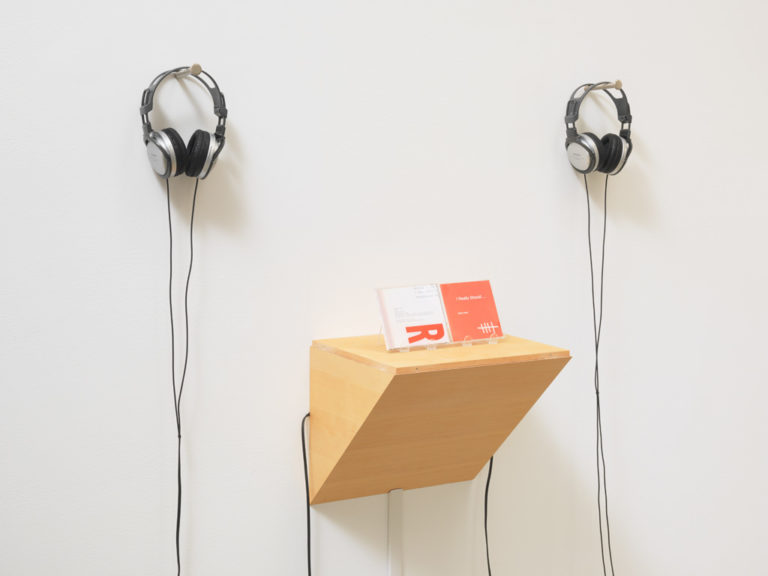
Kelly Mark, I Really Should, 2002, audio, 49:16.
Photo: Rachel Topham
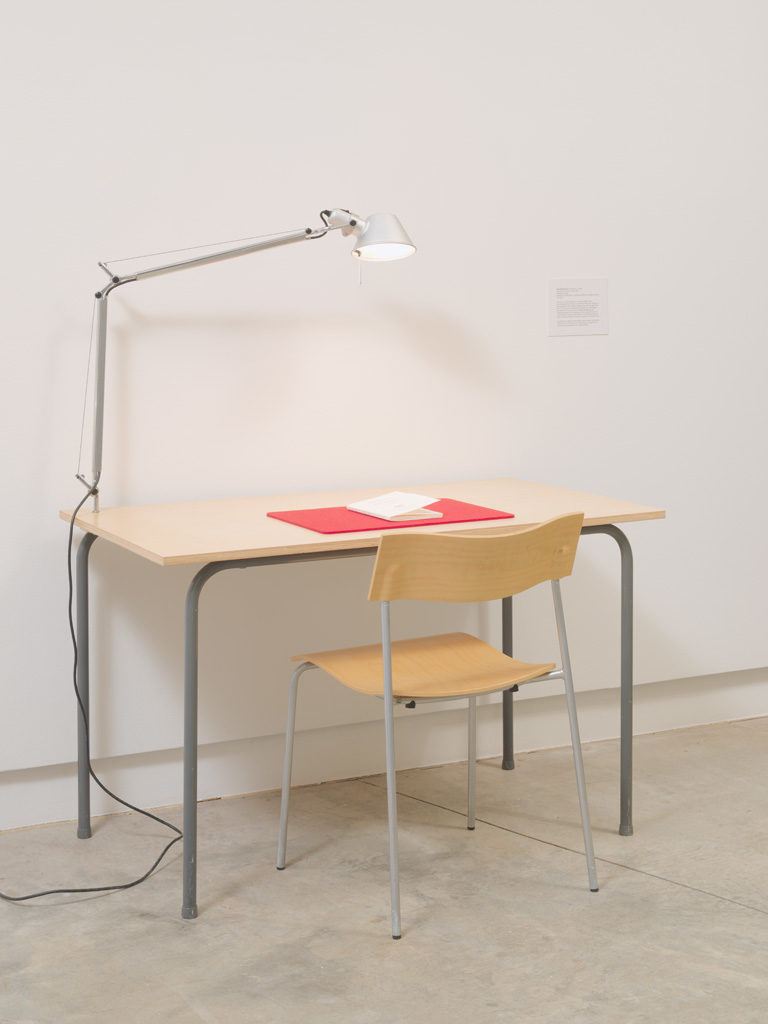
Lisa Robertson, Proverbs of a She-Dandy, 2017, letterpress book.
Photo: Rachel Topham
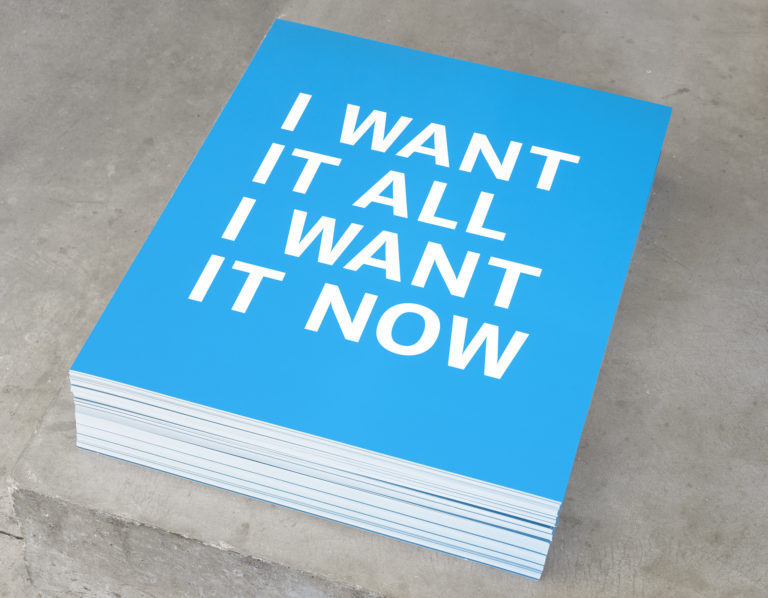
Kathy Slade, I WANT IT ALL I WANT IT NOW, 2003-18, offset print poster.
Photo: Rachel Topham
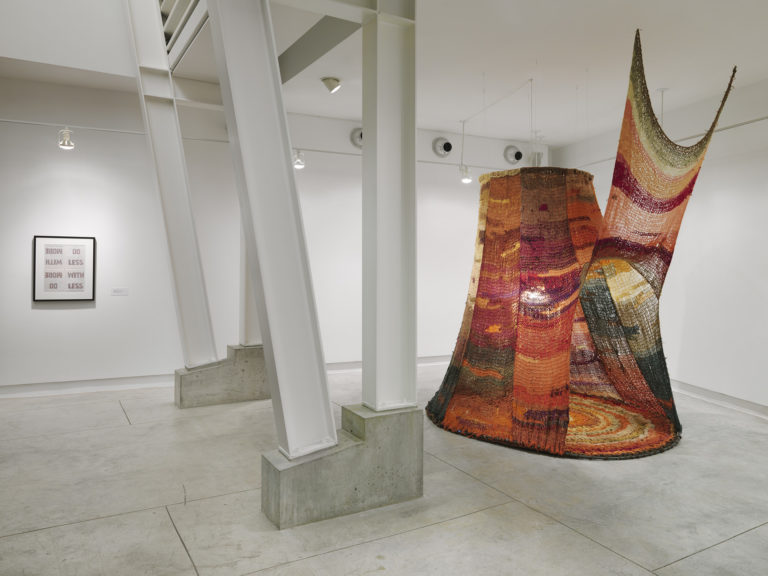
Left to right: Ladies Invitational Deadbeat Society (LIDS) with Anthea Black, Nicole Burisch and Wednesday Lupypciw, DO LESS WITH LESS / DO MORE WITH MORE, 2013-14, FUSE magazine pullout; Evelyn Roth, Environment for Reading Recycled from 110 Sweaters, 1974, textile, light fixture.
Photo: Rachel Topham
-
Alexandra Bischoff
ArtistAlexandra Bischoff is a performance artist and writer and activist from Edmonton, Alberta. Now based in Vancouver, British Columbia, Alexandra’s practice proliferates in several realms of the arts. In 2015, Alexandra received a Bachelor of Fine Arts from Emily Carr University of Art and Design, and was nominated as the Undergraduate Class Valedictorian. Although her work involves varying mediums, the quality of performance resonates throughout her oeuvre. Her practice explores the sensual and obscure intimacies of everyday interactions, focusing on the subtle anomalies of human existence. She often implements humour, absurdity, and femme sexuality to frame such topics, and at times to discuss challenging issues when implied.
Her work has been exhibited across Canada at galleries such as the Illingworth Kerr Gallery in Calgary, and Unit 17 and 221A in Vancouver, among others. She has been involved in reading rooms and book launches hosted at Burrard Arts Foundation, 221A, and the Vancouver Art Book Fair. As a writer, her work has been featured in publications such as LAUGH magazine, ISSUE, Transmutation Anthology, WOO, and AFFECTUS, as well as catalogues for Gam Gallery and the Rennie Collection. (2018)
Read More
-
Anthea Black and Shamina Chherawala
Artist -
Allyson Clay
Artist -
Jo Cook and the Vancouver Women's Bookstore
Artist -
Judith Copithorne
Artist -
Gathie Falk
Artist -
Martha Fleming and Lyne Lapointe
Artist -
Jamelie Hassan
Artist -
Colleen Heslin
Artist -
Corita Kent
Artist -
Alison Knowles
Artist -
Germaine Koh
Artist -
Laiwan
ArtistLaiwan is an interdisciplinary artist, writer, and educator with a wide-ranging practice based in poetics and philosophy. Born in Zimbabwe of Chinese parents, her family immigrated to Canada in 1977 to leave the war in Rhodesia. Her art training began at the Emily Carr Institute of Art + Design (1983), and she returned to school to receive an MFA from the School for Contemporary Arts, Simon Fraser University (1999). Recipient of numerous awards, including a recent Canada Council InterArts Research and Creation Award (2017) and Vancouver Queer Media Artist Award (2008), Laiwan serves on numerous arts juries, exhibits regularly, curates projects in Canada, the US, and Zimbabwe, is published in anthologies and journals, and is a cultural activist. Laiwan teaches in the MFA in Interdisciplinary Arts Program at Goddard College in Port Townsend, Washington (2001–). Recent projects in public space include A New World is Reversed Audiowork (2018), Other Sights; Mobile Barnacle City (2018), 10 Different Things with ECUAD Living Labs, City Studio, CoV, Artspeak, Goddard College; Barnacle City – The Movie (2017), CoV; Fountain: the source or origin of anything (2014), The Wall, Vancouver Heritage Foundation; and upcoming in 2019, Wander: toward a lightness of being, at the Skytrain Station bus exchange in New Westminster. (2018)
Read More
-
Sara Leydon
Artist -
Ladies Invitational Deadbeat Society (LIDS) with Anthea Black, Nicole Burisch, Wednesday Lupypciw
Artist -
Kelly Mark
Artist -
Divya Mehra
Artist -
Adrian Piper
Artist -
Kristina Lee Podesva
Artist -
Anne Ramsden
Artist -
Lisa Robertson
Artist -
Evelyn Roth
Artist -
Kathy Slade
Artist -
Elizabeth Zvonar
Artist -
Lorna Brown, Curator
Curator
Funders
The Beginning with the Seventies project is made possible with the generous support of the Vancouver Foundation, the Canada Council for the Arts, the British Columbia Arts Council, our Belkin Curator’s Forum members and the Department of Canadian Heritage Young Canada Works Program. We are grateful to 221A, Bopha Chhay, Georgia Scherman Projects, Kamloops Art Gallery, Monte Clark Gallery, Samek Art Museum, SFU Art Collection, Surrey Art Gallery and Vancouver Art Gallery for lending works to the exhibition.
Related
-
Exhibition
4 September 2018 – 2 December 2018
Beginning with the Seventies: Collective Acts
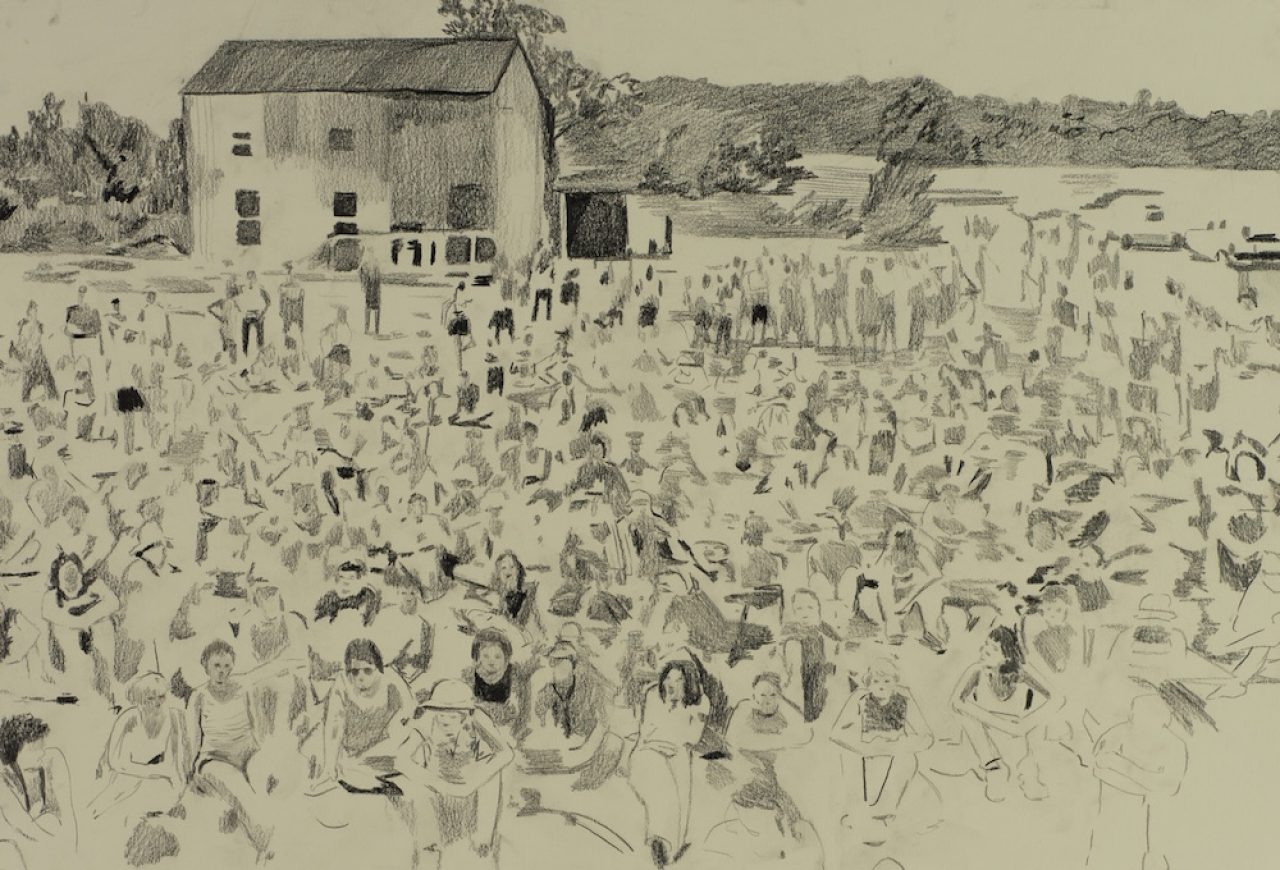
Collective Acts taps into the generative potential of archival research by artists into experiments with collective organizing and cooperative production, presenting new work by Dana Claxton, Jeneen Frei Njootli and the ReMatriate Collective, Christine D’Onofrio and Heather Kai Smith, alongside work by Salish Weavers Guild members Mary Peters, Adeline Lorenzetto and Annabel Stewart. Beginning with the Seventies: Collective Acts is curated by Lorna Brown and is the third of four exhibitions based upon the Belkin Art Gallery’s research project investigating the 1970s, an era when social movements of all kinds – feminism, environmentalism, LGBTQ rights, Indigenous rights, access to health services and housing – began to coalesce into models of self-organization that overlapped with the production of art and culture. Noting the resurgence of art practice involved with social activism and an increasing interest in the 1970s from younger producers, the Belkin has connected with diverse archives and activist networks to bring forward these histories, to commission new works of art and writing and to provide a space for discussion and debate.
[more] -
Exhibition
22 June 2018 – 12 August 2018
Beginning with the Seventies: Radial Change
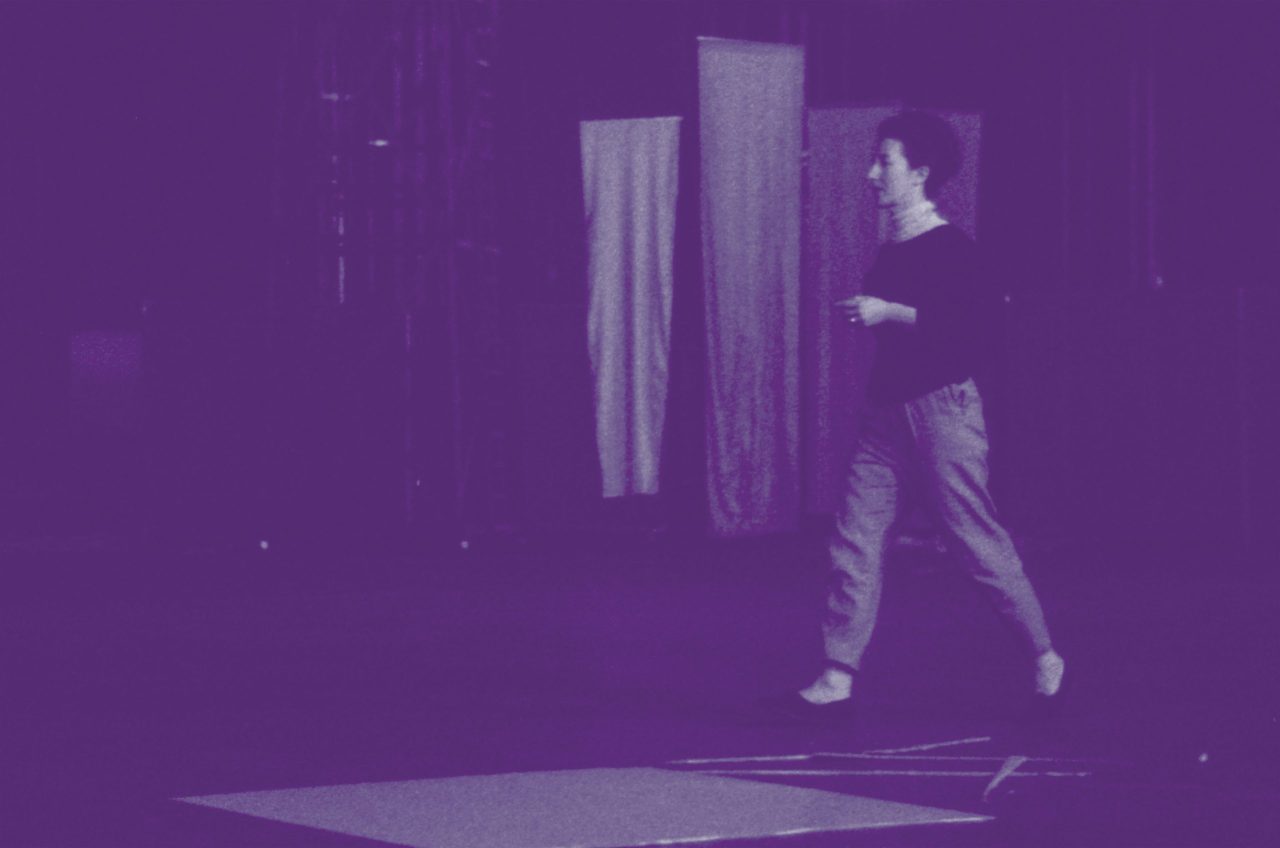
How is an archive formed? Memories of performance often exceed the containment of the document, whether photography, film, prop or testimony. As communities disperse and regroup over time, figures may slip away from the centre. Circling around the embodied archive, the exhibition Radial Change is drawn from the title of a dance work by Helen Goodwin. The elusive histories of Goodwin’s choreography and her influence on the interdisciplinary art scene of the 1970s are explored in new installation works by Evann Siebens and by Michael de Courcy.
[more] -
Publication
2020
Beginning with the Seventies
 Exhibition catalogue from the four exhibitions associated with the Beginning with the Seventies project at the Belkin: GLUT (12 January-8 April 2018), Radial Change (22 June-12 August 2018), Collective Acts (4 September-2 December 2018) and Hexsa'am: To Be Here Always (11 January-7 April 2019), edited by Lorna Brown, Greg Gibson and Jana Tyner. [more information and purchase]
Exhibition catalogue from the four exhibitions associated with the Beginning with the Seventies project at the Belkin: GLUT (12 January-8 April 2018), Radial Change (22 June-12 August 2018), Collective Acts (4 September-2 December 2018) and Hexsa'am: To Be Here Always (11 January-7 April 2019), edited by Lorna Brown, Greg Gibson and Jana Tyner. [more information and purchase] -
Publication
2017
Desire Change: Contemporary Feminist Art in Canada
 In the resistance to the violence of gender-based oppression, vibrant – but often ignored – worlds have emerged, full of nuance, humour, and beauty. Correcting an absence of writing about contemporary feminist work by Canadian artists, Desire Change considers the resurgence of feminist art, thought and practice in the past decade by examining artworks that respond to themes of diversity and desire. [more information and purchase]
In the resistance to the violence of gender-based oppression, vibrant – but often ignored – worlds have emerged, full of nuance, humour, and beauty. Correcting an absence of writing about contemporary feminist work by Canadian artists, Desire Change considers the resurgence of feminist art, thought and practice in the past decade by examining artworks that respond to themes of diversity and desire. [more information and purchase] -
Event
2 February 2018, 3-6 pm
Symposium: Groundhog Day Redux
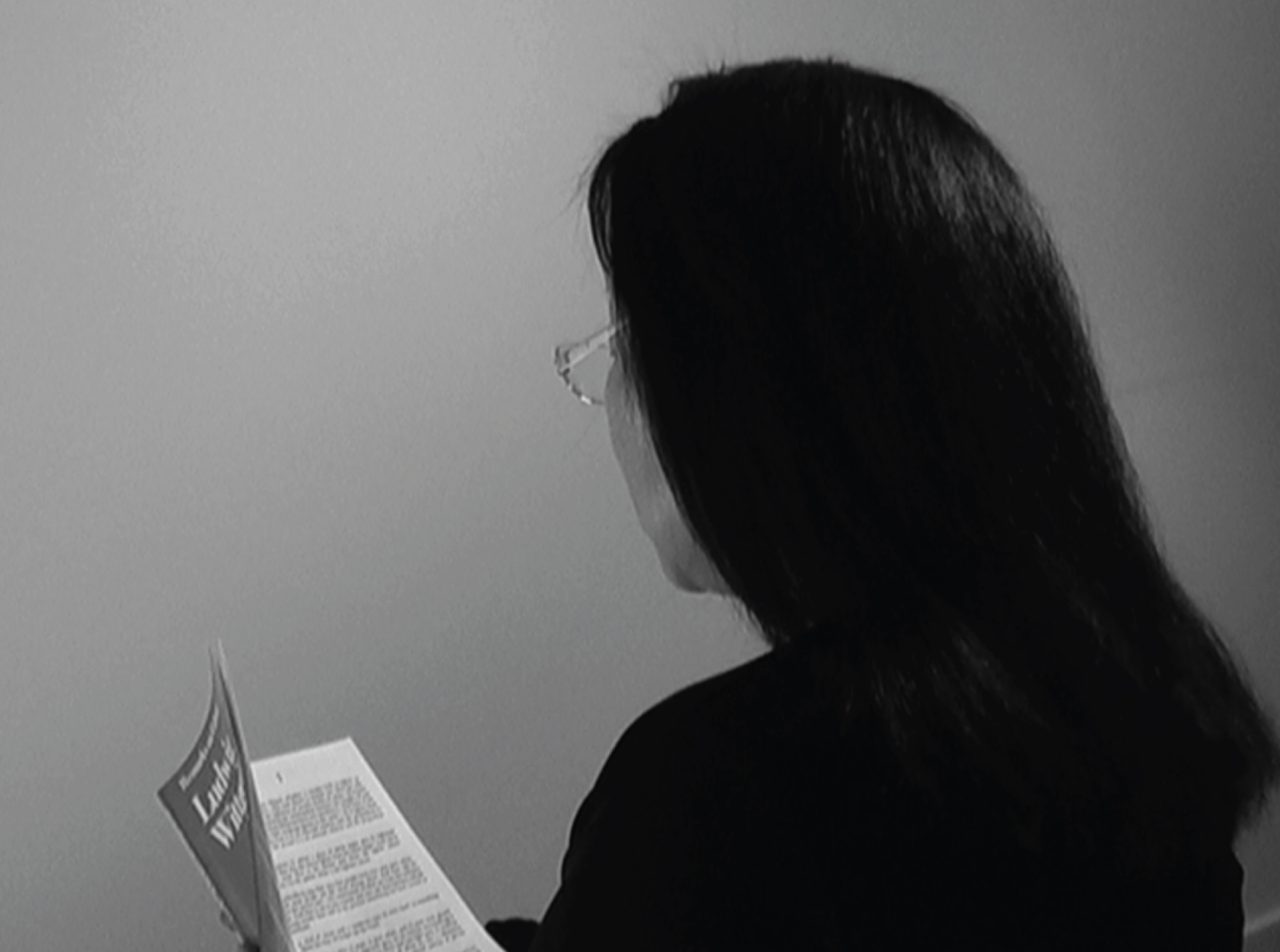
As part of the exhibition Beginning with the Seventies: GLUT, the Belkin is pleased to present Groundhog Day Redux, an afternoon symposium addressing the perennial nature of key issues in feminism and both the frustrations and fresh insights that come with repetition. Dian Million and Kristina Lee Podesva, in conversation with Kimberly Phillips, will address the topic of Archive as Body to consider how affect, emotion and embodiment influence out relationship to archives.
[more] -
Publication
2018
Lisa Robertson: Proverbs of a She-Dandy
 Written by Lisa Robertson, edited by Lorna Brown and Jana Tyner, designed by Derek Barnett, Information Office and printed by Peter Kruty Editions, Brooklyn, NY, Proverbs of a She-Dandy was commissioned on the occasion of the exhibition Beginning with the Seventies: GLUT at the Belkin (12 January-8 April 2018). [more information and purchase]
Written by Lisa Robertson, edited by Lorna Brown and Jana Tyner, designed by Derek Barnett, Information Office and printed by Peter Kruty Editions, Brooklyn, NY, Proverbs of a She-Dandy was commissioned on the occasion of the exhibition Beginning with the Seventies: GLUT at the Belkin (12 January-8 April 2018). [more information and purchase] -
Event
11 Feb 2018, 1 pm
11 Feb 2018, 2 pm
Kids Take Over UBC: Poem Power — For Mighty Kids Who Want to Change the World!
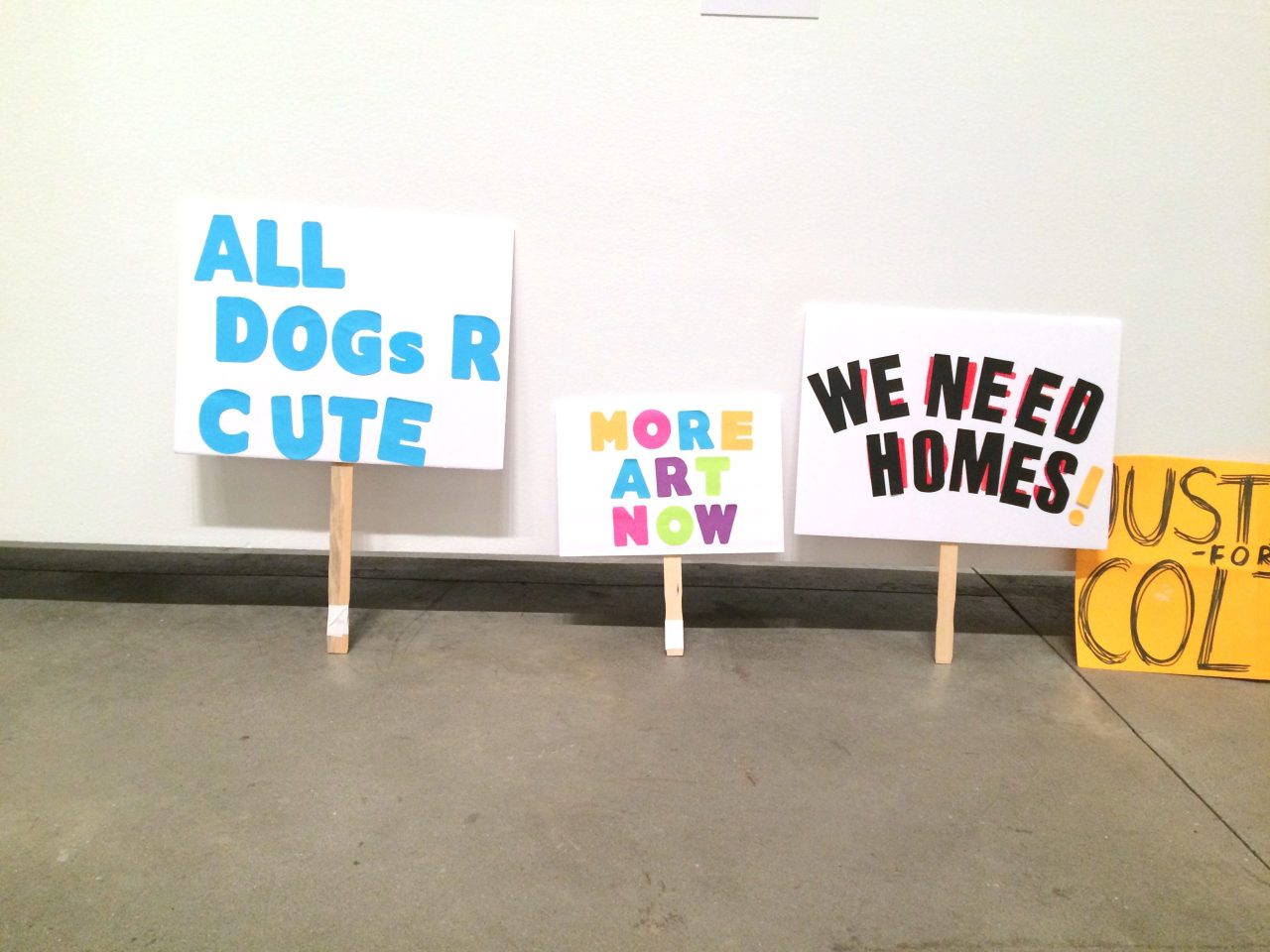 [more]
[more] -
Event
Reading: The Baudelaire Fractal with Lisa Robertson
Join us in the Gallery for a reading by poet and essayist Lisa Robertson, “The Baudelaire Fractal.” Robertson describes the subject thusly:
[more] -
Event
Fri 6 March 2020 at 5 pm
Sat 7 March 2020 at 1 pm
Book Launch and Symposium: Beginning with the Seventies
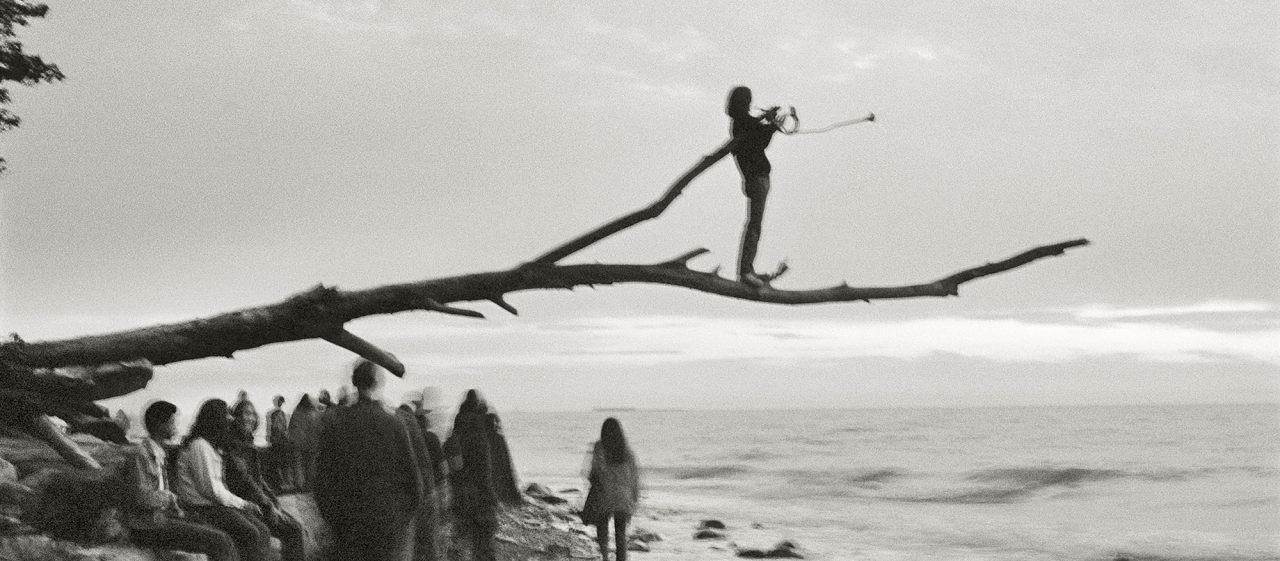
Please join us for a book launch and series of attendant events - readings, discussions, lectures - to celebrate the publication of our Beginning with the Seventies project. The program will take place on Friday, March 6 at the Musqueam Cultural Centre and Saturday, March 7 at the University Centre. Presenters include Lorna Brown, Lisa Darms, Thea Quiray Tagle, Kate Hennessy, Sarah Hunt, Yaniya Lee, Jaqueline Mabey, Allyson Mitchell and Lisa Robertson.
[more] -
Exhibition
11 January 2019 – 7 April 2019
Hexsa’a̱m: To Be Here Always

Working together at Kingcome Inlet in Summer 2018, a group of artists used film, video, social media, weaving, animation, drawing, language and song to address the urgent threats to the land and water. A manifestation of the relationships formed between the participants over this past year, Hexsa’a̱m: To Be Here Always is based on sharing knowledge and respectful collaboration. Simultaneously research, material, media, testimony and ceremony, the exhibit challenges the western concept that the power of art and culture are limited to the symbolic or metaphoric, and that the practices of First Peoples are simply part of a past heritage. As Marianne Nicolson states, “We must not seek to erase the influence of globalizing Western culture, but master its forces selectively, as part of a wider Canadian and global community, for the health of the land and the cultures it supports. The embodied practice of ceremonial knowledge relates to artistic experience – not in the aesthetic sense, but in the performative: through gestures that consolidate and enhance knowledge for positive change.” Hexsa’a̱m: To Be Here Always positions the gallery as an active location for this performance, drawing together many faculties and disciplines of the university in generative exchange.
[more]



